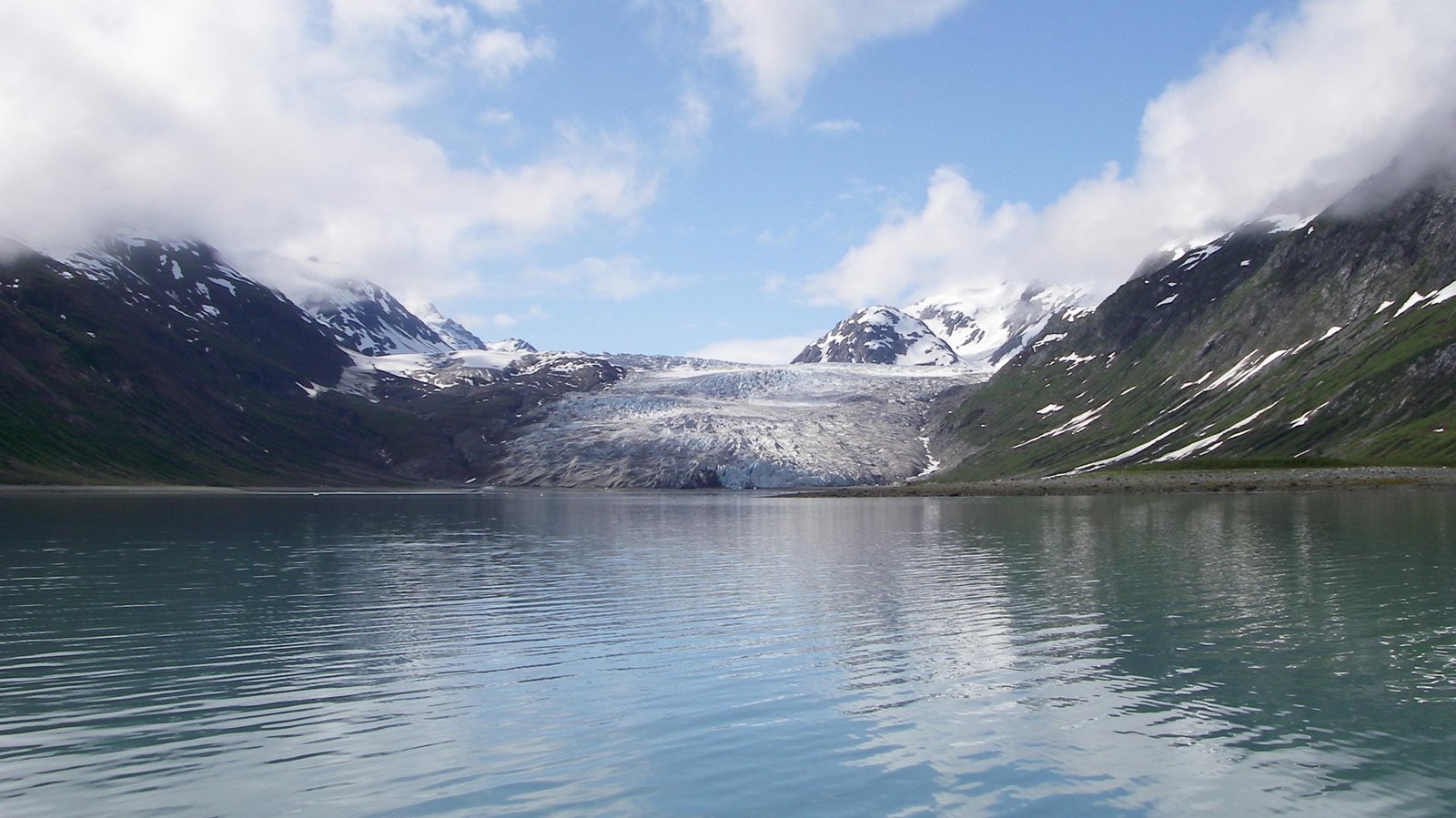Last updated: April 1, 2021
Place
Reid Inlet

NPS Photo
This quiet inlet is a destination for many a kayaker or recreational boater. The calm waters provide safe anchorage and the size of the cove and its beaches invite exploration. On the western end of the inlet Reid Glacier spills down from the Brady Icefield. Named for Harry Fielding Reid, one of the first scientists to study how glaciers move, this glacier moves slowly enough that expert mountaineers can traverse it to reach the Brady Icefield and peaks of the Fairweather Mountains. Visitors to the shore and beach meadows immerse themselves in a landscape of change. Hardy pioneer plants like dryas, silverweed, fireweed, lupine, and strawberries cover the valley sides. Some willows and alders have crept in, but larger trees like spruce and hemlocks are mostly absent. An exception are the large spruce trees at the inlet’s entrance, planted by early homesteaders.
History
Reid Glacier and Inlet are named for Harry Fielding Reid, an American geologist who visited Glacier Bay in 1890 and 1892. During his first visit, Reid focused on mapping and study of the Muir Glacier. On his second trip, he turned his attention to glaciers in what is now known as the West Arm of the bay. At the time he was a faculty member at the Case School of Engineering. He later joined the faculty of his alma mater, Johns Hopkins University, and the focus of his work turned from glaciers to earthquakes. He is considered America’s first geophysist. Reid named many features in the bay, but the glacier that bears his name was named by members of the Harriman Expedition that came to the bay in 1899. The glacier flows from the Brady Icefield and is no longer considered tidewater other than at extreme high tides.
In the mid-1920s, Joe and Muz Ibach found gold in the mountains above the inlet and later built a cabin on the shore. They had a more substantial cabin on Lemesurier Island, just outside the mouth of Glacier Bay. The Ibachs worked their claim intermittently through the 1940s.
